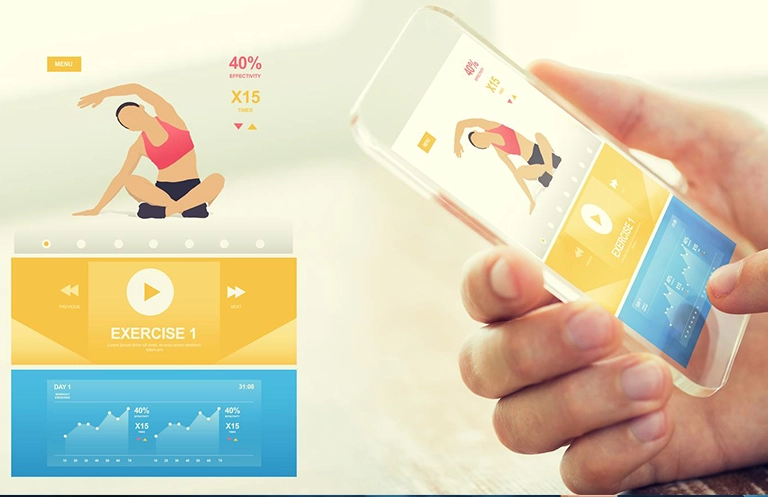Today, retail stores are constantly focusing on leveraging the emerging technologies like cloud, mobile, RFID, beacons, etc., to provide connected retail services and better shopping experience to customers. For example, store owners are integrating sensors in the key zones of retail stores and connecting them to cloud through a gateway that enables real-time data analysis related to products, sales, and customers from these sensors.
Interestingly, IoT in retail and connected technologies are taking the retail industry by storm. 96% retailers are ready to make changes required to implement the Internet of Things in their stores
96% retailers are ready to implement the #InternetofThings in their #retail stores as per Zebra Technologies survey @einfochipsltd
How IoT Helps in Retail
Internet of Things (IoT) is the network of physical objects that are embedded with software, sensors, and other technologies which basically connects and exchanges data with devices and systems over the internet. These devices vary from ordinary household objects to sophisticated industrial tools. From customer experience to supply chain management, IoT is changing various aspects of the retail sector. In 2021, the global IoT in retail market size was valued at $28.14 billion and estimated to reach $177.90 billion by 2031, growing at a CAGR of 20.3% from 2022 to 2031.
Use of IoT in the smart retail is hugely related to GPS and RFID technologies that help brands in tracking the products throughout entire supply chain process. It gives visibility to the retails for tracking product conditions and movement. It also helps in tracking the location and for predicting an exact delivery time.
Implementation of IoT solutions can be quite helpful in providing valuable information to the retailers. This facilitates a smooth customer experience. With the use of IoT solutions, retailers are digitizing brick-and-mortar stores, which can have a massive ROI from improved regulation in the supply chain and increased marketing conversions.
IoT-enabled technologies help in improving various factors such as effective monitoring of store space, proper inventory management, and evaluation of customer behavior. Optimizing and automating the supply chain is one of the core factors for IoT adoption. This opens the door of vast opportunities for any retailers in accessing large volumes of data especially on customers activity during in-store shopping. However, data security and high maintenance cost of IoT devices restrain growth of the market globally. On the other hand, reduction in cost of connected devices and IoT traction among SMEs will create lucrative opportunities for expansion of the IoT in retail market globally.

In-Store Navigation with IoT-enabled Devices
Identifying in-store navigation is one of the common problems in retail stores. Here, IoT devices with integrated technologies like Bluetooth, Wi-Fi, magnetic positions and augmented reality, etc., can facilitate in-store navigation to help customers navigate through the store and find the desired product.
It gives customers a multichannel shopping experience through digitization of physical assets. In-store navigation also helps increase the path to purchase rate before a product stock outs.
Example:
Bluetooth low energy (BLE) beacons are small sensors placed strategically throughout the retail store. These sensors are equipped with Bluetooth smart technology and compatible with smartphones. This BLE beacon device sends out continuous radio signals to nearby smart devices in the range. Smart devices in that range catch the signal and trigger events such as availability of a new product or launch of a new offer. Further, that device sends a unique ID to cloud server. The server checks that ID and responds back, through which communication between signal and smart device is established using a unique ID. Almost all customers nowadays carry smart devices like mobile phones and tablets. If BLE is used, customers can be notified on their smartphone with personalized coupons and deals as soon as they enter the store.
The above solution improves customer’s in-store experience and also increases footfall ratio. It also facilitates quick product search and increases conversion rates while generating a powerful shopping environment that can help enhance product offerings and store layouts.
Energy Management with Smart Devices
Energy consumption is a major cost consuming factor for the retail businesses, be it in refrigeration, lighting, heating, air conditioning, etc. Using these energy sources efficiently can bring cost saving of up to 20 percent per year. IoT-enabled smart devices can help resolve problems of energy management and saving.
There are several IoT-based platforms that can log, monitor and beep alarms or alert the in-store personnel about temperature, energy usage, heating, gas leakage, electricity breakdowns, etc., with the help of integrated sensors. Using these smart energy management devices, store owners can directly interact with the controllers of refrigerators and retrieve prioritized information with the help of sensors.
Example:
Every year, a large retail chain attributes nearly $2B of loss to wasted or spoiled food, with issues relating to its legacy refrigeration system, accounting for approximately 15% of this total—or $300 mm. In case of emergency situations like powercut or excessive heating, alarms from the controllers of these refrigeration systems reach the operations team only after 5 or 6 hours, and there is no mechanism to provide warnings before these situations occur. Here smart refrigeration IoT device can provide cloud-based temperature monitoring solution to notify the controllers about emergencies using temperature sensors and mesh networking technology.
Theft Prevention with Geo-Fencing
The crime of shoplifting in the retail industry is increasing day-by-day, because retailers fail to provide sufficient attention to shoplifters. According to National Association for Shoplifting Prevention (NASP), more than $25 million worth of merchandise gets stolen from retail shops each day. Adding more to retailers’ loss is retail shrinkage, which includes shoplifting, employe theft, paperwork error, vendor fraud and many more.
To overcome the problem of shoplifting and retail shrinkage, retailers can use Geo-fencing technique.
Geo-fencing relies on the global positioning system or a radio frequency identification (RFID) tag that allows a store operator to create a virtual barrier or zone around specific locations in retail shops. When a customer tries to move product from the specific location, an alert is triggered and a message is sent to the store in-charge. Geo-fencing enabled in IoT devices or beacons can help retailers in a number of ways; from keeping goods safe, tracking customers and employee movements, managing company-owned resources to minimizing incidents of theft and loss.
Customer Engagement with Sensor-Enabled Shopping Carts
The sensor-enabled shopping cart is a technique adopted by most of the retail merchandisers. These shopping carts help retailers grow their business in every aspect by helping them visualize shopper’s flows by category/subcategory, understand the shopping pattern, analyze the dwell path, and enable faster checkout.
This smart cart design involves sensors with connectivity protocols around the cart, which have the ability to track the movement of the wheels and match up with the distance the cart has traveled. It helps retailers with an accurate data of shopping carts with the inside-store journey. The data from this cart can be sent to the server or to cloud for further analysis.
eInfochips has extensive experience in designing Smart IoT solution for Retail industries. Our Snapbricks IoT Gateway Framework provides solutions like energy saving using sensors, path to purchase mapping, food freshness monitoring, vending process optimization, remote asset diagnostics & preventive maintenance, in-store navigation using BLE Beacons, theft prevention, queue management, foot-fall analysis, etc., that further helps improve your business processes and customer engagement.
Visualize your Retail Store with eInfochips’ IoT Solution












